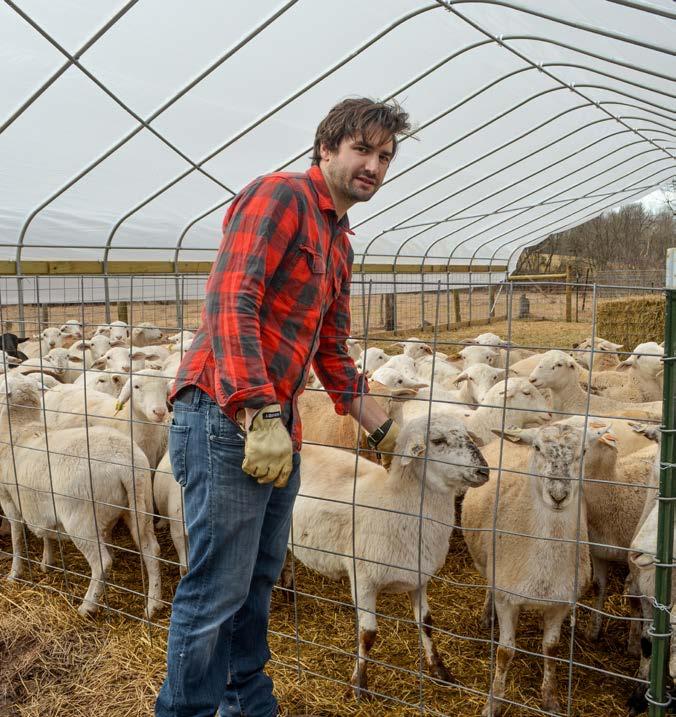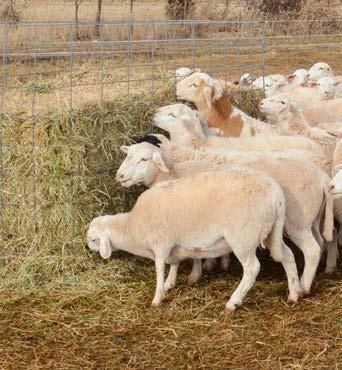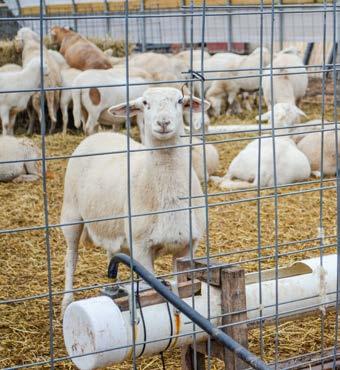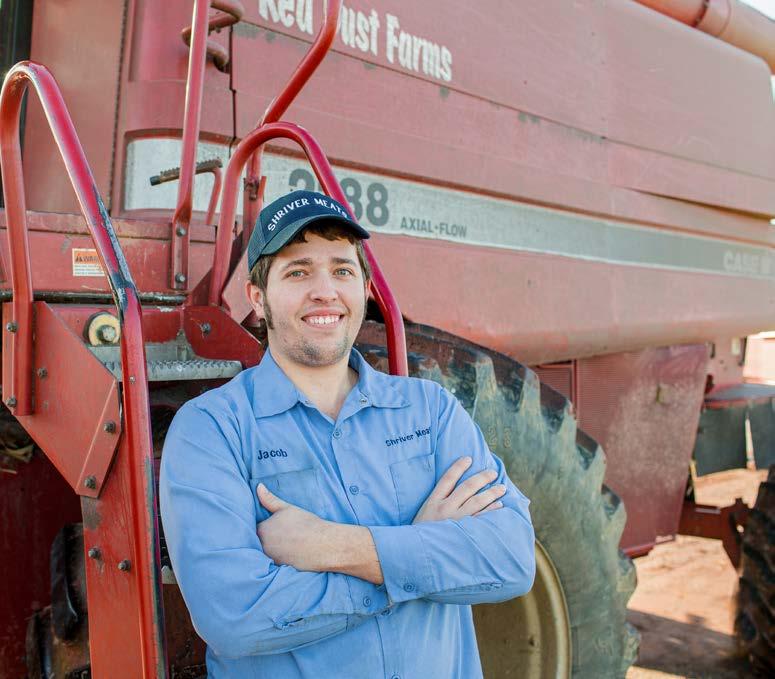
4 minute read
Starting with a Sound Plan
STARTING WITH A sound plan Story and photos by Sally Scholle
Keith Stauffer’s reasons for raising sheep can be summed up in three words: demand, interest and location. “First, the majority of U.S. lamb product comes from other countries. Second, we have a new generation of millennials who are actively looking for new and different protein,” says Keith. The third reason he lists is that his Gilbertsville, Pennsylvania farm is within an hour of the largest sheep and goat market in the nation. The growing consumer base within the eastern seaboard region places Keith in the ideal location for raising sheep.
Advertisement
Although Stauffer’s direct farm experience was limited prior to 2019, farming is part of his heritage. “Agriculture has been in my family for a thousand years,” he says, adding that his ancestry traces to Switzerland. “I’ve always had an attachment to the land.”
Once Stauffer decided to pursue raising sheep, he located a farm and started to explore financing. He looked at several options and spoke with both traditional and agricultural lenders. As he narrowed his financing options, Keith approached Farm Credit to discuss an operating loan and line of credit. “I hadn’t addressed the mortgage because we were approved for a commercial loan on the property through a traditional bank,” says Keith. “When Farm Credit offered it as an option, we found the terms and service to be more favorable, so we structured all of our financing here.”
Keith worked with Farm Credit loan officer Kelsey Feeg to obtain an operating loan and line of credit, and learned the same lender would finance the farm property. “I had already developed a financial model using the sheep enterprise template from University of Maryland Extension,” says Keith, who has experience in project management. “I also used more traditional business forecasting tools, but I had a robust business plan and cash flow modeling for one, three, and five years.” As a first-time farm real estate purchaser, Keith qualified for Farm Credit’s young and beginning farmers program.
After finalizing the farm purchase in February 2019, Keith named the 124 acre property Roman Hills Ranch, LLC after his young son Roman. “I wanted to have the farm for him, and also for me,” says Keith. “I’ve expressed my entrepreneurial skills in a corporate setting, and now I want to do it for myself.”
Keith immediately started to educate himself about the business of raising sheep with the help of webinars, books and producers’ forums. He sought guidance from experienced producers and settled on Katahdin and Dorper sheep, both hair breeds, for their natural resistance to parasites and overall easy maintenance.
“As I was negotiating to buy some ewe lambs from a producer, I spent



time on his farm,” says Keith, explaining how he established a relationship with a reputable breeder. “I made sure I got good quality lambs — I knew his health program and what he was feeding.” Keith plans to fine-tune his shepherding skills as he works with the same breeder during lambing season. The first group of nearly 100 ewe lambs arrived just four months after Keith purchased the farm. Additional lambs arrived in groups, including some purebred Katahdins that he plans to maintain as a separate flock for future purebred lamb sales. Keith also has a group of fall-born ewe lambs that he hopes to continue breeding for off-season lambs that will bring a premium price. Throughout the past year, Keith concentrated on building the flock and learning more about sheep. This winter, Keith is keeping sheep on both pasture and in an open shelter. Although he currently has 12 acres for grazing, Keith’s plans for this spring include installing permanent fence and developing pastures for additional grazing. As Keith continues to make improvements on the farm and work with his growing flock, he’s learning more about the business side of agriculture through Farm Credit’s AgBiz Master’s program. “It’s a twoyear program that connects young and potential farmers with an emphasis on bookkeeping,” explains Kelsey, adding that Keith is enthusiastic about the program. “It’s a good networking opportunity for younger producers.” Keith continually draws on his business acumen to ensure his enterprise is financially stable, and carefully weighs options prior to making decisions. “Tracking money well means tracking inputs,” he says. “I know how much and when I’m buying, and I can track it through my financial software.”
In addition to building his flock and pursuing options for purebred lamb sales, Keith is already thinking about diversifying his farm. “I’d like to develop the farm as an agritourism destination and include activities such as farm stays, hayrides, pumpkin picking, and Christmas trees,” he says. “I also want to offer interaction with a variety of animals.”
Keith says one of the most rewarding aspects of his new endeavor is the relationships he’s built and conversations with other producers. “For me, that’s one of the most fulfilling parts of this,” he says. “It started as a spreadsheet and a dream, and I’m watching it grow.”
Check them out on Facebook and Instagram @RomanHillsRanch or visit RomanHillsRanch.com





